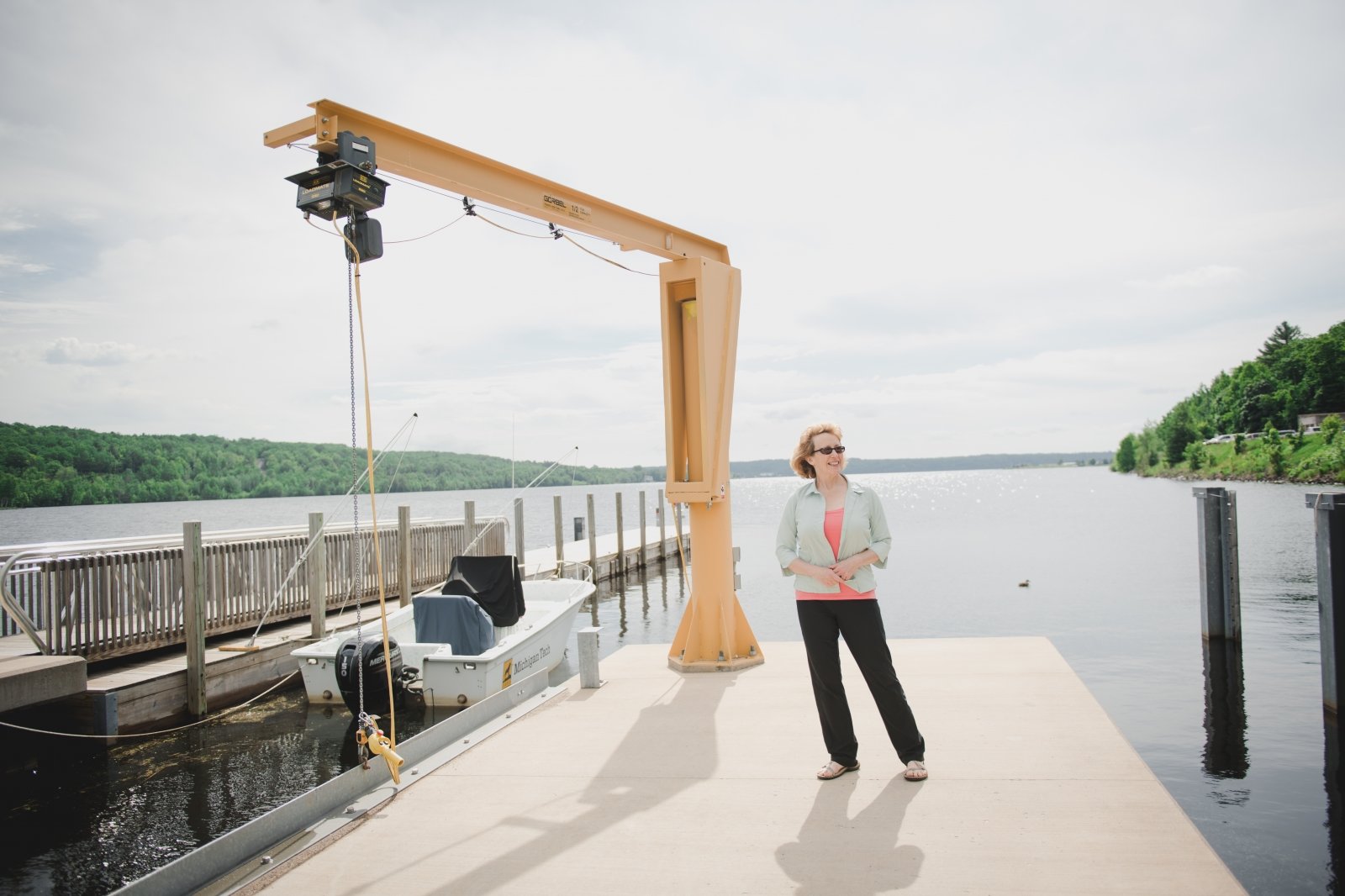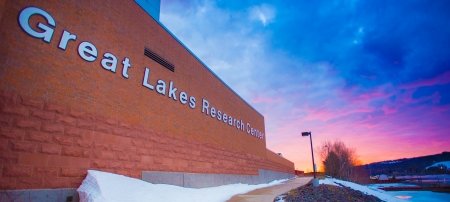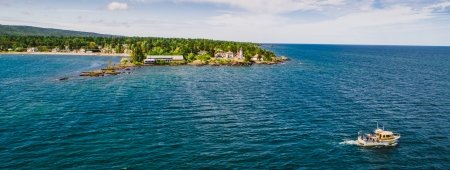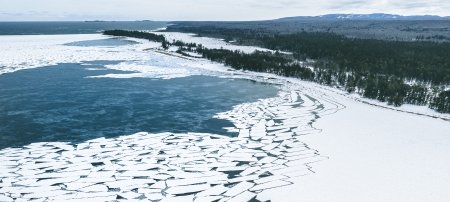The Lake Superior watershed's conservation history—one of both degradation and recovery—provides road maps to a more resilient future, says environmental historian Nancy Langston.
Langston, a Distinguished Professor of Environmental History in Michigan Technological University's Department of Social Sciences, will deliver the opening plenary talk at the State of Lake Superior Conference (SOLS) Oct. 9-12. Hosted by the International Association for Great Lakes Research (IAGLR), the event brings more than 200 Great Lakes researchers to Michigan Tech’s Great Lakes Research Center.
Langston has authored four books—her latest, Sustaining Lake Superior: An Extraordinary Lake in a Changing World, is echoed in the title of her talk. The thrust of her address will go deep into essential community connections: How do past actions inform efforts to preserve and protect the lake for the future?
"We face extraordinary challenges with climate change and how it affects the mobilization of toxic chemicals, people, new demands on water resources," says Langston. Part of meeting current and future threats to the health of the basin is recognizing that they're not the first challenges we've faced. Community response to issues ranging from paper mill manufacturing to trout populations has evolved over time.
"People really want to hear what they can do. They want to share their experiences of change in the watershed. It's not that I give them hope. It's that talking to them gives me hope."
Pristine? Not so much.
One of the most quickly deforested watersheds in North America, the interconnected pressures of mining, logging and farming took a toll on the region.
"I think too many people assume that because the Lake Superior watershed right now looks so forested, pristine and remote that it is pristine and remote," Langston says. "That's far from what history tells us.
"The fact that we have recovered so much that bears come into my garage, that we often hear pileated woodpeckers and that we see wolves—people have come to take those critters for granted, but they're really part of a much larger story of conservation recovery," says Langston, pointing to examples like the paper mill industry, which after decades of resistance, and grassroots community advocacy, found that water-pollution regulations created a level playing field that cut waste and made companies more profitable.
Another case in point: "We'll hear a lot about the fisheries, about lake trout, about sturgeon, whitefish and invasive species at this conference. Those are important stories to pay attention to," Langston says. "We had a really successful effort in the '50s, '60s and '70s to protect remaining populations and restore them, and so telling that narrative is important to set the stage for what we need to do now."
Langston is looking forward to a conference field trip to the $5 million fishery off the coast of Gay, the Keweenaw County mining town where milling operations resulted in a 22.7 million-metric-ton dump of mine tailings in the form of black sands. The black sands continually creep down the southwest shore and cover Buffalo Reef, where 20 percent of south Lake Superior's trout and whitefish spawn.

Drawn to the Greatest of Lakes
“I find all the Great Lakes fascinating but I’m very much focused on Lake Superior,” says Langston, who moved to the Midwest in 1995. “I came up to Lake Superior in the second year, in the winter, and fell completely in love with it,” she says. “The storms, the waves, the waters.” She spent 15 summers in a tiny cottage outside the Apostle Islands, on the far western shore. “A shack really,” she says, “with no running water and, at first, no electricity.” She kayaked, biked, hiked and wrote three of her books there.
Langston served on the Lake Superior Binational Forum for six years. Her work with the group increased her involvement in mining issues, on bringing communities together and looking at the history of taconite, which became a big chunk of her fourth book. “The book was originally supposed to be about the boreal forests of the north. I got so involved with Lake Superior, I just realized there was a whole book there. I got very fascinated by the pollutants in the lake, some of which were increasing, while others were decreasing.”
"I'm here because I fell in love with the Lake. The other lakes are cool, but I've never fallen in love with them."
Eventually Langston decided she wanted to live full time on the lake. She was thrilled when Michigan Tech began its “water cluster” hiring for the Great Lakes Research Center.
A Community of Lake Superior Advocates
There are more than 40 Michigan Tech researchers and students participating in the conference, including a contingent from the Ann Arbor, Michigan-based Michigan Tech Research Institute (MTRI).
“I came here five years ago to join this community of water scientists and scholars. We have an amazing group,” says Langston, “and I’m looking forward to hearing what all of them have to say.”
She’s particularly looking forward to presentations that explore community involvement around Lake Superior.
“Michigan Tech is innovating and doing a really great job integrating social sciences, Indigenous perspectives, forestry and water quality questions,” says Langston. A series of sessions highlight communities around the lake, bringing in perspectives from Bad River and Red Cliff, Wisconsin bands of Lake Superior Ojibwe; Keweenaw Bay Indian Community in Baraga County, Michigan; and the Great Lakes Indian Fish & Wildlife Commission.
Langston’s talk is preceded by welcomes from KBIC Tribal Council President Warren “Chris” Swartz, Michigan Technological University President Richard Koubek and an opening drum ceremony by Ojibwe and Menominee tribal members.
Michigan Technological University is an R1 public research university founded in 1885 in Houghton, and is home to nearly 7,500 students from more than 60 countries around the world. Consistently ranked among the best universities in the country for return on investment, Michigan's flagship technological university offers more than 120 undergraduate and graduate degree programs in science and technology, engineering, computing, forestry, business, health professions, humanities, mathematics, social sciences, and the arts. The rural campus is situated just miles from Lake Superior in Michigan's Upper Peninsula, offering year-round opportunities for outdoor adventure.





Comments